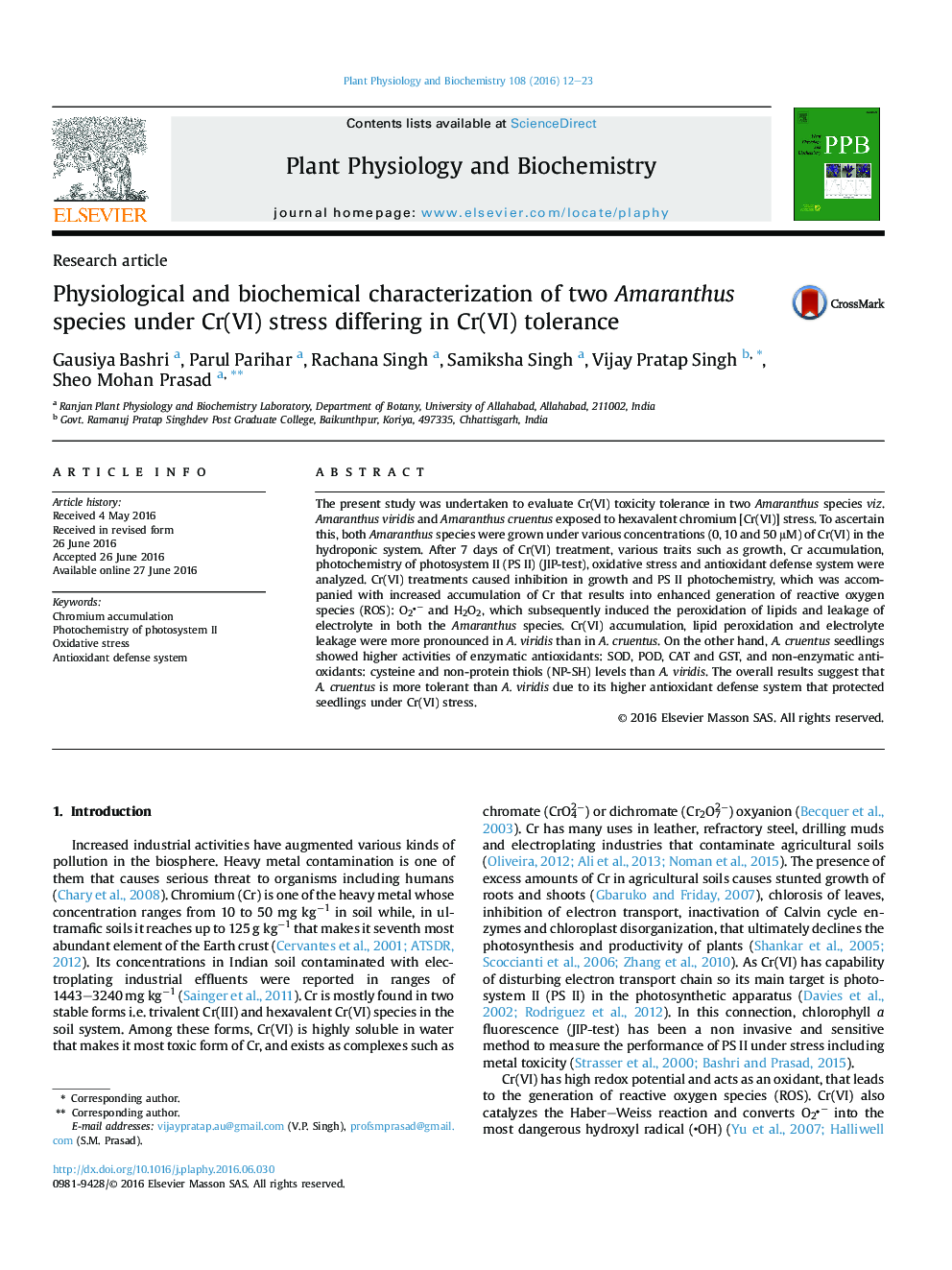| Article ID | Journal | Published Year | Pages | File Type |
|---|---|---|---|---|
| 2014687 | Plant Physiology and Biochemistry | 2016 | 12 Pages |
Abstract
The present study was undertaken to evaluate Cr(VI) toxicity tolerance in two Amaranthus species viz. Amaranthus viridis and Amaranthus cruentus exposed to hexavalent chromium [Cr(VI)] stress. To ascertain this, both Amaranthus species were grown under various concentrations (0, 10 and 50 μM) of Cr(VI) in the hydroponic system. After 7 days of Cr(VI) treatment, various traits such as growth, Cr accumulation, photochemistry of photosystem II (PS II) (JIP-test), oxidative stress and antioxidant defense system were analyzed. Cr(VI) treatments caused inhibition in growth and PS II photochemistry, which was accompanied with increased accumulation of Cr that results into enhanced generation of reactive oxygen species (ROS): O2â and H2O2, which subsequently induced the peroxidation of lipids and leakage of electrolyte in both the Amaranthus species. Cr(VI) accumulation, lipid peroxidation and electrolyte leakage were more pronounced in A. viridis than in A. cruentus. On the other hand, A. cruentus seedlings showed higher activities of enzymatic antioxidants: SOD, POD, CAT and GST, and non-enzymatic antioxidants: cysteine and non-protein thiols (NP-SH) levels than A. viridis. The overall results suggest that A. cruentus is more tolerant than A. viridis due to its higher antioxidant defense system that protected seedlings under Cr(VI) stress.
Related Topics
Life Sciences
Agricultural and Biological Sciences
Plant Science
Authors
Gausiya Bashri, Parul Parihar, Rachana Singh, Samiksha Singh, Vijay Pratap Singh, Sheo Mohan Prasad,
